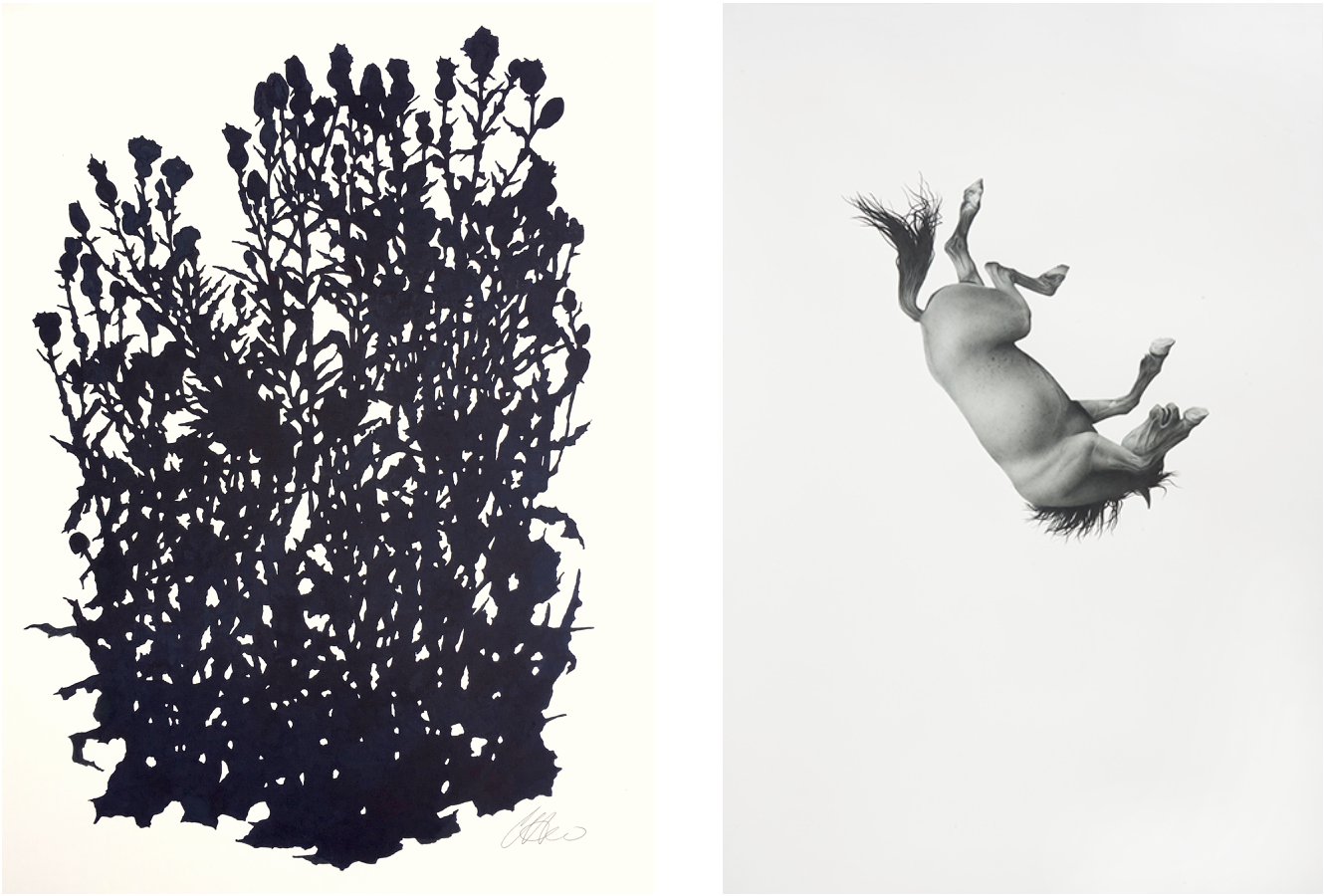Reinventing the Line: Post-Digital Artworks by Mike Lyon
“Reinventing the Line,” an exhibition of works by Mike Lyon on display in Weinberger Fine Art’s Drawing Room, is a phantasmagoric experience. Lyon, a post-digital artist, creates prints and paintings using automated machinery and digital technologies. The results are expansive; Lyon’s exhibited artworks range from geometric spirals of paint on canvas to photorealistic monochrome prints on paper. Although the works featured in “Reinventing the Line” showcase a broad range of style and form, they are all markedly process-forward and technologically advanced masterpieces.
“Sinjun,” Acrylic on paper, 30 x 42 inches
Many of the artworks currently on display in the Drawing Room are composed of vibrantly colored lines forming hundreds of overlapping squares. The artist uses a CNC (computer numeric control) router to build repetitive, spiraling patterns of acrylic paint that rely on gradient and contrast to convey figures. Up close, the many squares appear tile-like, causing the artworks to resemble patchwork quilts. As viewers step further back from the paintings, the lines of color and geometric shapes give way to images of faces and figures. A mesmerizing video of Lyon’s process accompanies his painted masterpieces, inviting viewers to contemplate Lyon’s artistic and technological practice alongside his finished works. Process is thus central and transparently visible in the exhibition.
Portraits comprise the majority of Lyon’s square spiral paintings. Partially obfuscated, heavily shadowed faces peer out of kaleidoscopes of shapes and lines. In some paintings, the image is clear enough to identify the subject’s facial expressions; others are so abstracted that the figure is barely identifiable. The geometrical precision of Lyon’s spiraling lines affords the artworks a matrix-like quality. The repetitive square layers function as a mediation of the images that they simultaneously construct and obstruct. In these portraits, technology both creates and obscures imagery.
“Miguel,” Acrylic on paper, 30 x 42 inches
In addition to the mediating power of technology, Lyon’s portraits pose the question of recognition. The artist explores the possibilities of conveying faces and bodies with geometrical shapes and starkly contrasting colors rather than traditional representative techniques. The result is both highly conceptual and strikingly visceral: it poses an optical anomaly and encourages contemplation of the technological landscape that has drastically influenced the production and consumption of art.
“Sara Reclining” deviates drastically from Lyon’s signature square spiral portraits. The artwork, a Japanese woodcut print on rice paper, represents a woman turned away from the viewer, lying nude among the ruffled sheets and blankets that adorn her bed. The print is a blue monochrome, ranging from gentle robin’s egg cerulean to deep midnight navy. The woman is posed so casually, so innocuously, that she seems to be as much a natural part of the bed as the sheets that surround her. The scene emanates a deeply personal atmosphere, as if viewers are glimpsing a profoundly intimate and delicate moment in the woman’s quotidian life.
“Sara Reclining,” Japanese woodcut, 42 x 77 inches
“Reinventing the Line” is homage to the expanding possibilities of technology’s influence on art. Lyon creates a visual reality in which automated machinery acts as mediator between imagery, subject, and viewership. The exhibition spotlights the complex relationships between representative experimentation, technological innovation, and contemporary portraiture.











